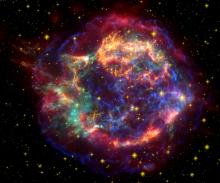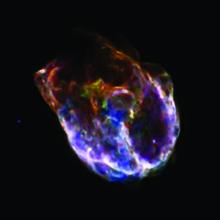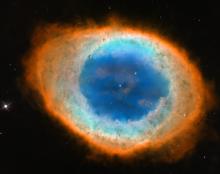Listen to today's episode of StarDate on the web the same day it airs in high-quality streaming audio without any extra ads or announcements. Choose a $8 one-month pass, or listen every day for a year for just $30.
You are here
Beryllium
In the movie “Galaxy Quest,” a starship is powered by a sphere of beryllium, one of the lightest chemical elements. That may be strictly Hollywood fantasy, but beryllium is an important component in many spacecraft.
Beryllium comes in several forms, but only one of them is stable. That form is produced between the stars, when cosmic rays zap atoms of heavier elements, splitting the atoms apart.
A tiny bit of beryllium was incorporated into Earth’s crust. And it has a lot of uses. It’s combined with copper or other elements, for example, to make alloys that are especially strong and durable.
Beryllium doesn’t block X-rays or most other forms of radiation, so it’s used in many scientific settings. It forms the pipes that surround the particle beams in the Large Hadron Collider. When the particles in those beams ram together, the radiation and particles they produce pass right through the pipes so they can be recorded by scientific instruments.
Beryllium also frequently finds its way into space. It’s used in some rocket nozzles, and was a key component in the brakes and windshields of the space shuttles.
And because it doesn’t expand or contract much as it changes temperature, it’s also great for the mirrors of space telescopes. All the mirrors aboard Spitzer Space Telescope are made of beryllium, and so are the giant mirrors of the new James Webb Space Telescope — “powering” the continued exploration of the universe.
Script by Damond Benningfield






